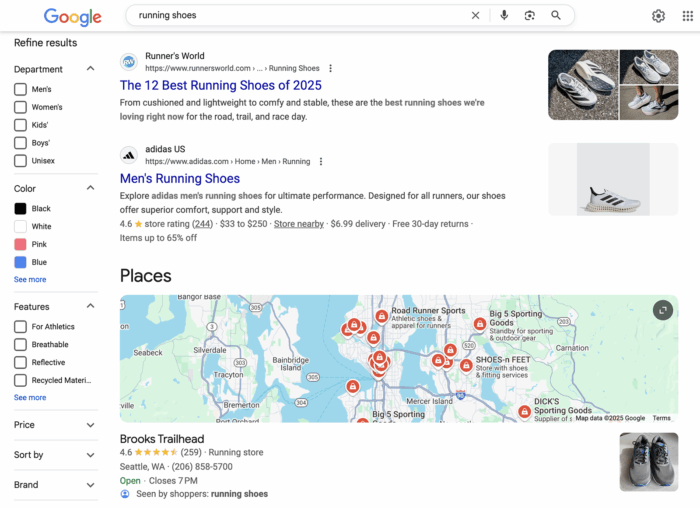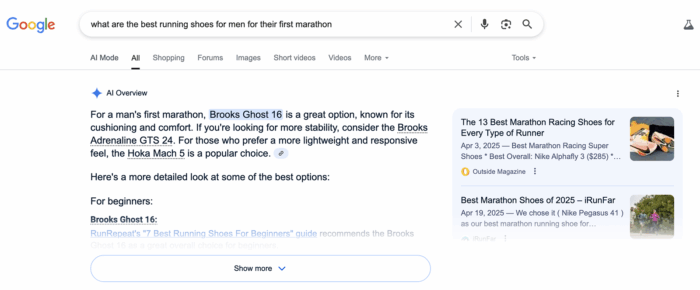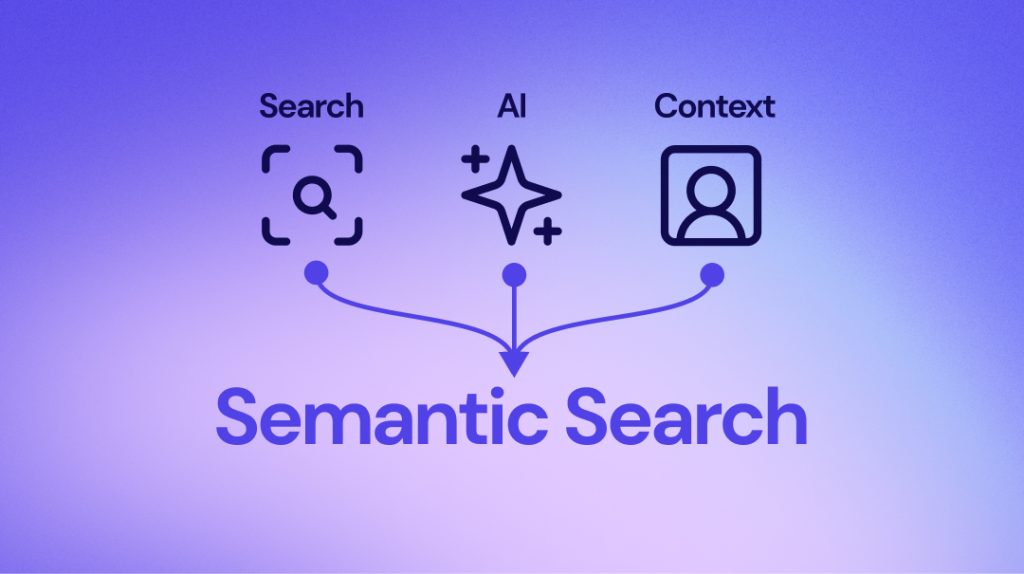Search engines have come a long way from simply matching keywords to delivering intelligent, context-aware results. Today, semantic search powers modern search engines, allowing them to understand user intent, relationships between concepts, and the deeper meaning behind queries.
For businesses and content creators, this shift means that traditional SEO tactics—like keyword stuffing and exact-match phrases—are no longer enough. To stay competitive, you need to optimize for semantic search, ensuring your content aligns with how search engines interpret and rank information.
What Is Semantic Search?
Semantic search is an advanced search technology that focuses on understanding the intent and contextual meaning behind a user’s query rather than just matching keywords. Instead of relying solely on individual terms, semantic search analyzes:
-
User intent (What is the searcher really looking for?)
-
Entity relationships (How do concepts connect?)
-
Natural language patterns (How do people phrase questions?)
This approach allows search engines to deliver more accurate, relevant results—even if the exact keywords aren’t present in the content.
What’s the Difference Between Keyword Search vs Semantic Search?
| Aspect | Keyword Search | Semantic Search |
|---|---|---|
| Focus | Exact keyword matches | Meaning and intent behind the query |
| Example Query | “best running shoes” | “What are the top-rated running shoes for marathons?” |
| Results | Pages with the exact phrase | Pages covering durability, comfort, and performance—even if they don’t include “best running shoes” |
| Technology | Basic term frequency analysis | NLP, knowledge graphs, and AI (like BERT) |
Is Google a Semantic Search Engine?
Yes. Google has been using semantic search principles for years, with major advancements like:
-
Hummingbird (2013): Shifted focus from keywords to intent.
-
BERT (2019): Improved understanding of natural language.
-
MUM (2021): Multitask AI for complex queries.
-
AI Overviews (2024): Directly answers questions by synthesizing information.
Today, Google’s algorithm doesn’t just “match” keywords—it understands concepts, synonyms, and user goals to provide the best possible answers.
How Does Semantic Search Work?
Semantic search relies on a combination of artificial intelligence (AI), natural language processing (NLP), and knowledge graphs to understand queries and deliver relevant results. Here’s a breakdown of the key components:
1. Natural Language Processing (NLP)
-
NLP helps search engines interpret human language—including slang, synonyms, and context.
-
Example: If you search “Why is my phone battery dying so fast?”, NLP helps Google understand you’re looking for battery optimization tips, not just the keyword “phone battery.”
2. Knowledge Graphs & Entity Recognition
-
Search engines like Google use knowledge graphs—massive databases of interconnected entities (people, places, things).
-
Example: A search for “Leonardo da Vinci” pulls related info about his paintings, inventions, and history—not just pages with his name.
3. User Intent Analysis
-
Queries are classified into intent categories: informational, navigational, commercial, or transactional.
-
Example:
-
“How to fix a leaky faucet” → Informational (tutorials, guides)
-
“Buy Nike Air Max online” → Transactional (e-commerce pages)
-
4. Context & Personalization
-
Factors like location, search history, and device type refine results.
-
Example: Searching “coffee shops near me” shows local cafés based on your IP address.
5. AI & Machine Learning (e.g., BERT, MUM)
-
Google’s BERT analyzes word relationships in long queries.
-
MUM (Multitask Unified Model) handles complex, multi-part questions (e.g., “Best hiking trails in summer vs. winter”).
Why Semantic Search Matters
1. Increases Search Relevance
-
Semantic search delivers more accurate results by focusing on meaning, not just keywords.
-
Example: A search for “affordable cold weather jackets” might show budget-friendly parkas, even if the page says “cheap winter coats.”
2. Improves the User Experience
-
Users find what they need faster, reducing bounce rates.
-
Voice search & conversational queries (like “OK Google, where’s the nearest urgent care?”) rely on semantic understanding.
3. Boosts Engagement and Conversions
-
Content that aligns with user intent earns longer dwell times and higher rankings.
-
E-commerce sites benefit from semantic product searches (e.g., Amazon showing “similar to your recent purchases”).
Examples of Semantic Search
Google Search

Google’s search engine is the most prominent example of semantic search in action. When users enter queries, Google analyzes the context and intent behind the words rather than just matching keywords. For example:
-
A search for “Italian restaurants open now” considers location, current time, and cuisine preferences.
-
A query like “effects of caffeine” returns results about health impacts, sleep disruption, and benefits—not just pages containing the exact phrase.
Google AI Overviews

With the introduction of AI Overviews, Google now provides summarized answers by pulling information from multiple sources. This feature demonstrates semantic search by:
-
Understanding complex questions like “What’s the best way to learn Spanish as a beginner?” and offering step-by-step guidance.
-
Combining data from articles, videos, and forums to create comprehensive responses.
Amazon Search

Amazon uses semantic search to improve product discovery. Its algorithm interprets:
-
Synonyms (e.g., searching for “laptop” also shows results for “notebook computer”).
-
User intent (e.g., “gifts for mom under $50” filters by price and occasion).
-
Natural language queries (e.g., “waterproof Bluetooth speaker for pool parties”).
Instacart Search

Instacart’s search functionality relies on semantic understanding to help shoppers find groceries efficiently. Examples include:
-
Recognizing brand alternatives (e.g., searching “Oreos” also shows store-brand chocolate sandwich cookies).
-
Understanding dietary preferences (e.g., “gluten-free pancake mix” surfaces relevant options).
-
Interpreting vague queries (e.g., “something sweet for a party” suggests desserts and snacks).
7 Best Practices to Optimize for Semantic Search
To succeed in the era of semantic search, you need to align your content with how search engines understand context, user intent, and relationships between topics. Here are seven proven strategies to optimize your content effectively:
1. Opt for Natural Language Over Keyword Stuffing
Search engines now prioritize conversational, user-friendly content over rigid keyword matching.
-
Write for humans first – Use questions, complete sentences, and natural phrasing.
-
Avoid over-optimization – Instead of forcing “best running shoes 2024” repeatedly, write naturally: “If you’re looking for the top running shoes this year, here’s what experts recommend.”
-
Leverage long-tail queries – Target phrases like “What are the most comfortable running shoes for flat feet?”
2. Incorporate Semantically Related Terms
Search engines analyze related terms to understand topic depth.
-
Use synonyms & variations – For “smartphone,” include terms like “mobile device,” “Android/iOS,” and “cell phone.”
-
Leverage tools – Google’s “People also ask,” LSIGraph, or AnswerThePublic can suggest related terms.
-
Contextualize meaning – If writing about “Python,” clarify whether it refers to the programming language or the snake.
3. Create Topic Clusters and Pillar Pages
A hub-and-spoke model helps search engines grasp content relationships.
-
Pillar page – A comprehensive guide (e.g., “Ultimate Guide to SEO”) covering broad topics.
-
Cluster content – Supporting articles (e.g., “How to Optimize Meta Tags,” “Best Backlink Strategies”) linking back to the pillar.
-
Improves topical authority – Signals to search engines that you’re an expert on the subject.
4. Build Out Your Internal Linking Strategy
Internal links help search engines discover and contextualize content.
-
Link relevant pages – Connect articles with anchor text like “Learn more about voice search optimization here.”
-
Avoid generic anchors – Use descriptive phrases instead of “click here.”
-
Prioritize deep links – Link to subcategory pages, not just the homepage.
5. Understand and Speak to User Intent
Google ranks content based on why users search, not just what they search.
-
Identify intent types:
-
Informational (“How to fix a leaky faucet”) → Create tutorials.
-
Commercial (“Best DSLR cameras for beginners”) → Comparison guides.
-
Transactional (“Buy iPhone 15 Pro Max”) → Product pages.
-
-
Analyze SERPs – See what content ranks for your target query (e.g., videos, blogs, or product pages).
6. Implement Structured Data
Schema markup helps search engines better interpret and display your content.
-
Common schema types:
-
Article (for blogs)
-
Product (for e-commerce)
-
FAQ (for question-based content)
-
-
Enhances rich snippets – Can trigger star ratings, FAQs, or breadcrumbs in SERPs.
7. Think Beyond Your Website: Use Social Media
Search engines consider brand signals, including social engagement.
-
Share content on platforms – Google indexes tweets, LinkedIn posts, and YouTube videos.
-
Encourage discussions – Comments and shares indicate relevance.
-
Leverage multimedia – Videos and infographics can rank in universal search.
Conclusion
The rise of semantic search has fundamentally changed how content is discovered and ranked online. No longer can websites rely on keyword tricks or thin content—today’s search engines demand deep relevance, user-first content, and semantic understanding.
By optimizing for semantic search, you’re not just pleasing algorithms—you’re creating a better experience for real users. When you focus on natural language, topic clusters, and structured data, you make it easier for search engines to:
-
Understand your expertise
-
Connect your content to real search intent
-
Present your pages as the best solutions
The future of SEO belongs to creators who embrace context over keywords, meaning over exact matches, and value over shortcuts. Start implementing these semantic search strategies today, and you’ll build content that ranks well now and remains resilient as search evolves.
Ready to future-proof your content? Begin by auditing one key section of your site using these principles, and watch how it performs in the coming weeks. The semantic web is here—make sure your content speaks its language.





